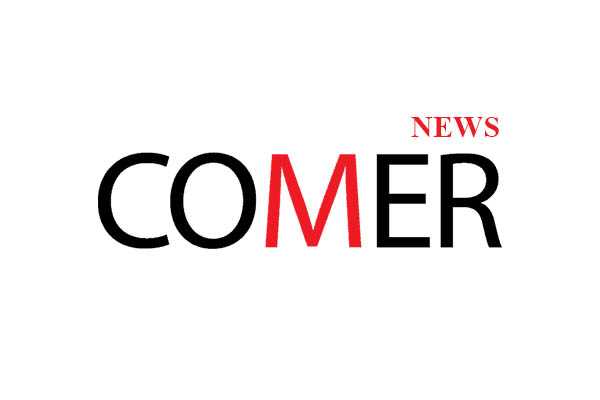Canadian Union of Public Employees,The Bullet, Socialist Project, E-Bulleting No.1449, July 17, 2017
The Canada Infrastructure Bank (CIB) will create a pipeline of privatization for our public transit systems. Corporations will be able to extract long-term profit from public transit fares and public subsidies.
Our governments subsidize public transit because it’s critical infrastructure for our communities: to get us from place to place, to reduce traffic congestion, and to green our environment. When we allow corporations to plan, finance, operate, maintain and own public transit, we funnel ridership fares and government funding into corporate coffers.
The CIB will give unprecedented control and decision-making power over our public transit infrastructure to private sector investors. This means the public interest will take a back seat in transit planning and development.
Many of our public transit systems in recent years have been built using publicprivate partnerships (P3s). The CIB will open the door to even further privatization, allowing profit to drive public transit planning and decision-making.
Transit Privatization
Almost one-third of the $81.3 billion in new infrastructure spending promised in Budget 2017 is for transit infrastructure over 11 years. This includes $20.1 billion through new public transit bilateral agreements between the federal government and provinces and territories and $5 billion through the new CIB. Canadian and foreign investors are expected to put in up to $4 in private funds for every public dollar in the CIB.
The Liberals have played a privatization shell game. While the mandatory P3 screen will end, which had forced all large infrastructure projects through a P3 evaluation process, the CIB is explicitly designed to promote privatization. And 20 percent of federal public transit funding will be funneled through this privatization bank in addition to the expected private sector investment.
The privatization of public transit systems will likely mean long-term P3 contracts where the private sector finances, operates and maintains the service – all at a cost.1 No public transit system in North America has been able to cover all its operating costs through transit fares. Governments provide ongoing funding to help residents get from place to place. With public transit privatization, private companies extract long-term profits while governments continue to subsidize the service.
Transit Privatization Hurts CUPE Members and the Public
Pushing public transit projects through the “privatization bank” will hurt the 9,000+ CUPE members who work in the sector. It will also hurt citizens particularly lower or middle-income earners who will have to pay for this higher cost public transit either directly through transit fares or indirectly through our tax system.
A majority of CUPE members in the transit sector – over 7,100 – are bus drivers employed by 19 municipal transit authorities in Quebec. CUPE also represents workers who do maintenance work on public transit systems that can be outsourced in many transit privatization projects.
Privatization hurts workers by putting downward pressure on wages and working conditions. Contracting-out and lowwaged precarious work are key ways private corporations can profit from infrastructure like public transit. This hurts workers but it also affects public services. Private sector ownership, operating and maintenance shift public transit from serving the public good to supporting private profit.
Privatization also hurts the public. Transit users may face higher transit fares or have to use systems where decision-making on routes has been guided by private profit rather than the public interest. Privatization projects may also limit community involvement and participation in key decisions. Furthermore, broader societal priorities such as reducing greenhouse gas emissions are easily ignored in privatization projects.
Privatization Gone Wrong: Réseau électrique métropolitain (REM)
There are many examples of transit privatization in recent years that can give us some indication of the dangers involved. One example, which may receive funding through the CIB, is the $6 billion Réseau électrique métropolitain (REM) light rail project in Montreal.
This project to connect Montreal’s south shore, the airport, the city centre and Deux- Montagnes has been designed and partially financed by the Caisse de dépôt et placement du Québec, which manages the funds of the Quebec Pension Plan and other public pension funds. Decisions about the route, technology and compatibility with existing transit lines have been driven by what suits the profit interests of the Caisse and private developers rather than the public.
The rail line will be maintained, operated and even owned by the Caisse – at significant extra cost. A La Presse investigation estimated the REM will operate with a funding shortfall of approximately $240 million per year. It’s possible public transit fares across the entire city will increase in order to generate these profit levels.2Regardless, the public will pay for the higher costs through subsidies from municipalities or the Quebec government or higher fares for transit users.
With the REM, the Quebec government has outsourced public transit planning, design, operation and maintenance to the Caisse. They’ve even sold off segments of their core public transit infrastructure. This will make it difficult to further expand Montreal’s public transit system, integrate it with other transportation networks such as Via Rail and properly oversee the service. This privatization scheme has resulted in a public transit plan that maximizes private profit at the public’s expense.
Unfortunately, we have many cases of public transit privatization gone wrong across the country. The Canada Line P3 in Vancouver, British Columbia went overbudget, lacked innovation and integration with the broader transit system and undermined public accountability. The Ontario Auditor General review of P3 projects, including six transit projects, found that P3s cost $8 billion more than if they had been delivered publicly due to increased private-sector financing costs and a lack of risk transfer. Furthermore, a review of Edmonton’s P3 LRT development indicated that savings were likely going to be found through poor labour practices. Unfortunately, more transit privatization blunders will be coming our way through the privatization bank.
Conclusion
We need to build the public transit infrastructure that reduces traffic congestion, helps the environment and gets us from place to place. This infrastructure helps grow our communities and our economy. But building our public transit infrastructure through the Canada Infrastructure Bank will lead to a pipeline of privatization. Our infrastructure needs to be built in a way that benefits communities, not private investors. It needs to be built in the most cost-effective way – through low-cost public financing. And it needs to include good green jobs for transit workers.
Canadian Union of Public Employees (CUPE) is the largest union in Canada, representing some 650,000 workers in healthcare, education, municipalities, libraries, universities, social services, public utilities, transportation, emergency services and airlines. This article was first published on their website.
End Notes
- Dachis, B. Commentary No. 473, New and Improved: How Institutional Investment in Public Infrastructure can Benefit Taxpayers and Consumers, C.D. Howe Institute, March 2017.
- Schepper, B. “CDPQ et le REM, un projet qui démantèle le réseau de transport en commun de Montréal,” IRIS, février 2017.
Our Comment
Who asked permission of the citizens of Canada for this transfer of power? Ask around: many people have never even heard of the Canada Infrastructure Bank! Most Canadians have no idea of the infrastructure bank they have owned since 1935, and of their right to the funding of infrastructure through the use of government-created money.
Privatization, another prized “principle” of neoliberalism, is, for most of us, the road to endless debt.
Given a decent chance to respond to the CIB project, we might have called on the wisdom of Dr. John Hotson, co-founder of COMER. In 1996, in a presentation on Understanding Money, he attributed the economic “mess” at that time to our leaders’ violation of “four common sense rules regarding their fiscal and monetary policies:
- No sovereign government should ever, under any circumstances, give over democratic control of its money supply to bankers.
- No sovereign government should ever, under any circumstances, borrow any money from any private bank.
- No National, provincial, or local government should borrow foreign money to increase purchases abroad when there is excessive domestic unemployment.
- Governments, like businesses, should distinguish between “capital” and “current” expenditures, and when it is prudent to do so, finance capital improvements with money the government has created for itself.
With these rules in mind and the historic record of our use of the Bank of Canada we might have mounted a successful campaign against this monstrous ploy to end-run the Bank of Canada.
By-passing our constitutional and legal right to borrow money at near-zero interest, threatens to pull that zipper of the neoliberal body bag clear up to the top of our heads!
The disastrous impact of this scheme on priorities such as the environment, on national sovereignty, and on our political economy cannot be overestimated.
It is a downright demonic theft of the commons!
Unless we take a united stand against the present system, there will, one day be no public employees. All but the rentiers will be twenty-first-century serfs in a vassal state of a global neofeudal society.
Élan





